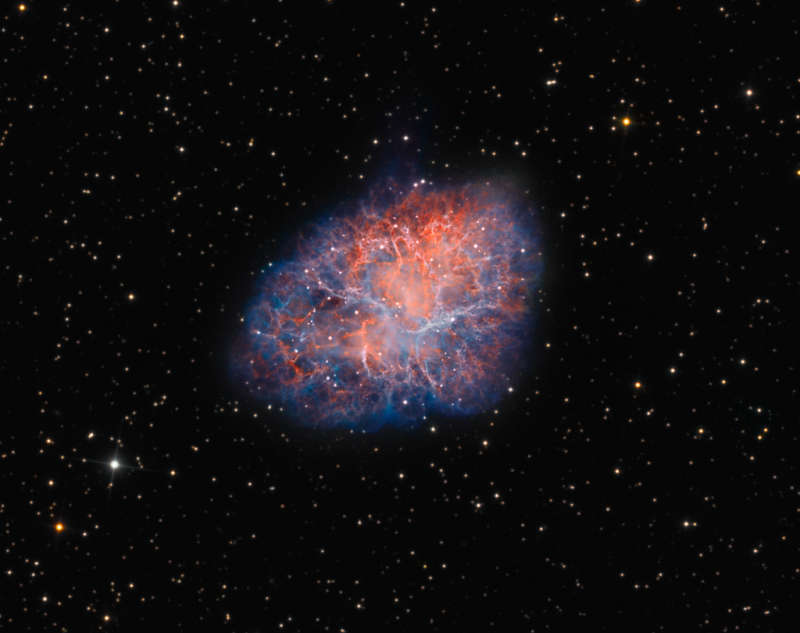Credit & Copyright: Martin Pugh
Explanation:
The Crab Nebula is cataloged as M1, the first object on
Charles
Messier's famous 18th century list of things which are not comets.
In fact,
the
Crab is now known to be a
supernova remnant,
debris from the death explosion of a massive star,
witnessed
by astronomers in the year 1054.
This sharp,
ground-based telescopic view uses
narrowband data to track emission from ionized oxygen and hydrogen atoms
(in blue and red) and explore the tangled filaments within
the still expanding cloud.
One of the most exotic objects known to modern astronomers,
the Crab Pulsar,
a neutron star spinning 30 times a second,
is visible as a bright spot near
the
nebula's center.
Like a cosmic dynamo,
this collapsed remnant of the stellar core
powers the Crab's emission across the electromagnetic spectrum.
Spanning about 12 light-years, the Crab Nebula is a mere
6,500 light-years away in the
constellation
Taurus.
1999 2000 2001 2002 2003 2004 2005 2006 2007 2008 2009 2010 2011 2012 2013 2014 2015 2016 2017 2018 2019 2020 2021 2022 2023 2024 2025 |
Yanvar' Fevral' Mart Aprel' Mai Iyun' Iyul' Avgust Sentyabr' Oktyabr' Noyabr' Dekabr' |
NASA Web Site Statements, Warnings, and Disclaimers
NASA Official: Jay Norris. Specific rights apply.
A service of: LHEA at NASA / GSFC
& Michigan Tech. U.
|
Publikacii s klyuchevymi slovami:
supernova remnant - pulsar - Krabovidnaya tumannost' - ostatok Sverhnovoi - pul'sar v Krabe
Publikacii so slovami: supernova remnant - pulsar - Krabovidnaya tumannost' - ostatok Sverhnovoi - pul'sar v Krabe | |
Sm. takzhe:
Vse publikacii na tu zhe temu >> | |
